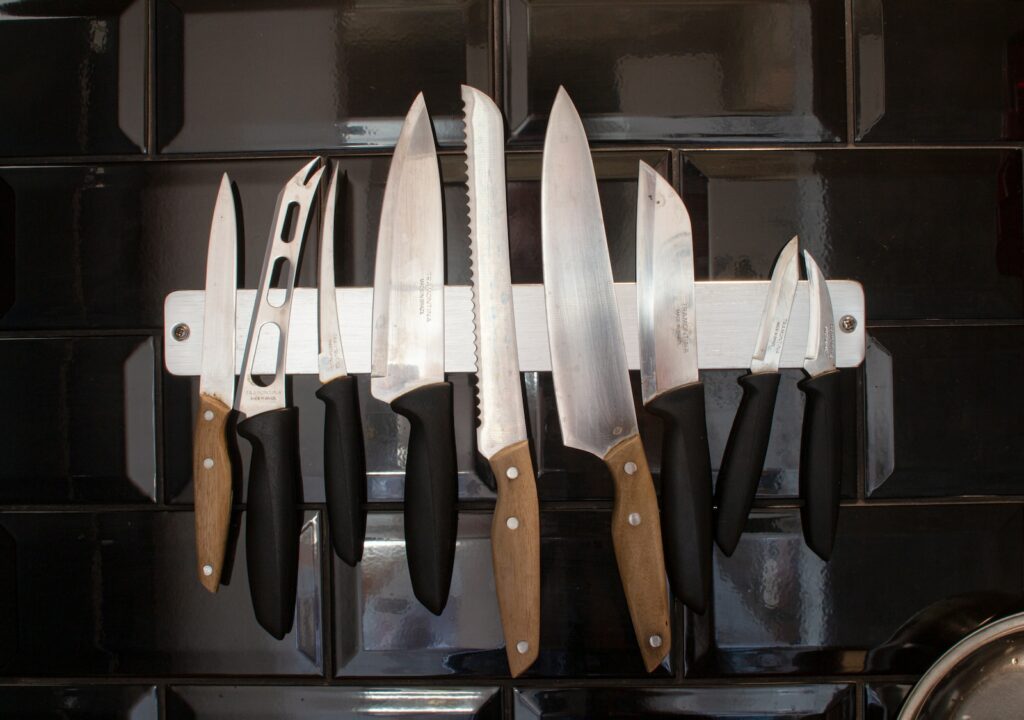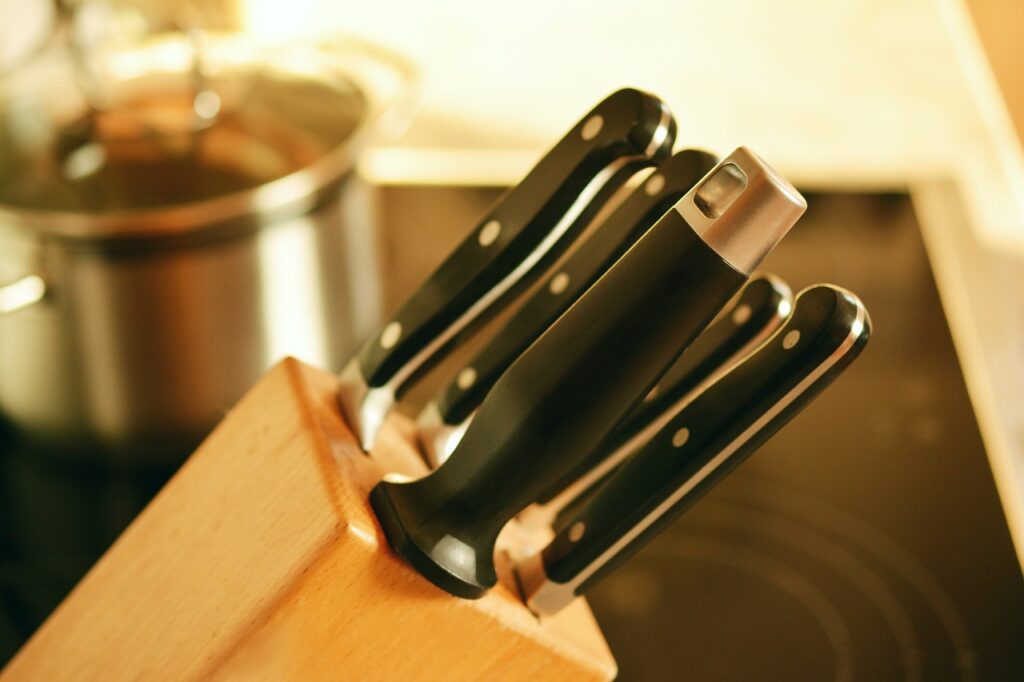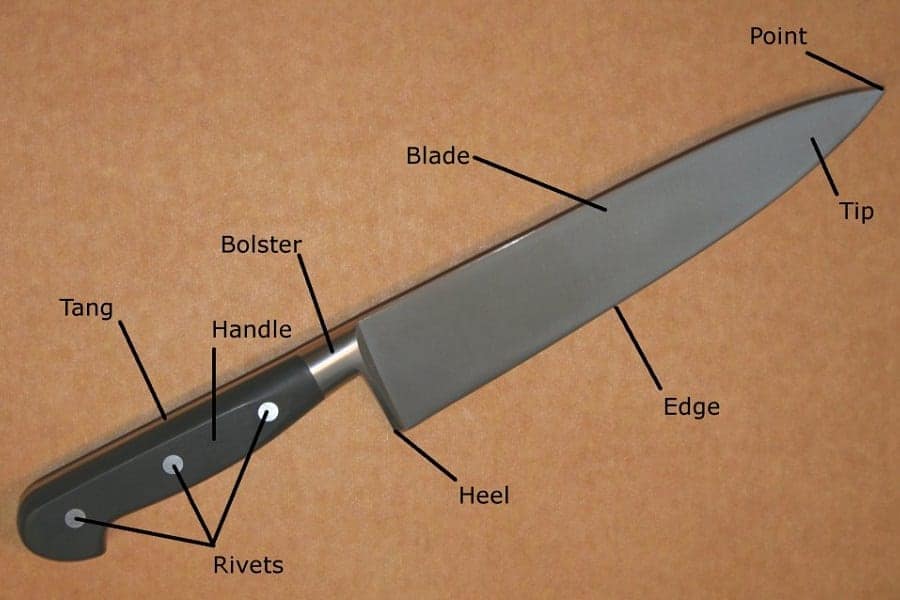Knives are more than just tools; they are essential companions in our daily lives. From the kitchen to the great outdoors, knives play a crucial role in various aspects of life. Whether you’re a professional chef, an avid hunter, or simply someone who appreciates the convenience of a well-crafted blade, understanding the Anatomy Of The Different Types Of Knives is key to making informed purchasing decisions and ensuring their proper usage.
Imagine yourself in a bustling kitchen, preparing a delicious meal for your loved ones. As you slice through vegetables with precision, your chef’s knife effortlessly glides through each ingredient, making your cooking experience a breeze. Now, picture yourself in the wilderness, embarking on a hunting expedition. With a trusty hunting knife by your side, you can skillfully field-dress your game, ensuring a successful and efficient process.
Knives are not limited to professional settings or outdoor adventures. In our everyday lives, we encounter countless situations where a reliable blade can come in handy. From opening packages to cutting ropes, a well-designed knife can make these tasks effortless and safe.
However, not all knives are created equal. Each type of knife has its own unique anatomy, designed to serve specific purposes. By understanding the different components of a knife, you can choose the right tool for the job and maximize its potential.
In this article, we will delve into the fascinating world of knife anatomy, exploring the various components, materials, and designs that make each knife type unique. So, whether you’re a culinary enthusiast, an outdoor adventurer, or simply someone who appreciates the craftsmanship of a well-made blade, join us on this journey as we unravel the secrets of the different types of knives.
Understanding Knife Anatomy

When it comes to knives, understanding their anatomy is crucial for making informed purchasing decisions and ensuring proper usage. Let’s dive into the different components that make up a knife and explore their significance.
The Blade
The blade is the heart of any knife. It’s the part that does the cutting, so its shape and characteristics play a vital role in its intended use. Different blade shapes serve different purposes. For example, a chef’s knife with its broad, curved blade is perfect for slicing, dicing, and chopping, while a paring knife with its narrow, pointed blade is ideal for intricate tasks like peeling and trimming.
Blades can be made from various materials, each with its own advantages and disadvantages. Stainless steel blades are popular for their corrosion resistance and ease of maintenance, while carbon steel blades offer superior sharpness and edge retention. It’s important to consider the material that best suits your needs and preferences.
The Handle
The handle is where you grip the knife, so its design and material are crucial for comfort, grip, and control. Handles can be made from a variety of materials, including wood, plastic, and composite materials. Each material has its own unique characteristics, such as wood’s natural beauty or plastic’s durability and ease of cleaning.
Ergonomic features like finger grooves, bolster shape, and handle texture can greatly enhance your experience with a knife. Finger grooves provide a secure grip, while a well-designed bolster ensures a smooth transition between the blade and handle. Handle texture, whether smooth or textured, can also affect your grip and control.
Other Components
In addition to the blade and handle, other components contribute to a knife’s overall functionality. The bolster, located between the blade and handle, adds weight and balance to the knife. The tang refers to the portion of the blade that extends into the handle. A full tang, where the blade extends the full length of the handle, provides strength and durability.
Understanding knife terminology is also important. The spine refers to the top, non-cutting edge of the blade, while the edge is the sharpened cutting surface. The point is the tip of the blade, and the heel is the rear part of the blade closest to the handle.
By familiarizing yourself with these components and their characteristics, you’ll be better equipped to choose the right knife for your specific needs. Whether you’re a professional chef or a home cook, understanding knife anatomy is the key to unlocking the full potential of your blades.
For more information on knife skills and techniques, check out this knife skills resource. It provides valuable insights into the importance of knife anatomy in the culinary world.
Exploring Handle Designs and Ergonomics

Now that we’ve covered the basics of knife anatomy, let’s dive into the world of handle designs and ergonomics. The handle of a knife is just as important as the blade, as it directly affects your comfort, grip, and control while using the knife.
When it comes to knife handle materials, there are various options to choose from. Traditionalists may prefer the warmth and beauty of wooden handles, which can be made from different types of wood like walnut, rosewood, or ebony.
These handles provide a classic look and a natural feel in the hand. On the other hand, modern synthetic materials like plastic or composite materials offer durability, easy maintenance, and a wide range of colors and textures to choose from.
Consider the example of a chef’s knife. Imagine holding a knife with a wooden handle that fits perfectly in your hand. The natural texture of the wood provides a secure grip, even when your hands are wet or greasy. The weight and balance of the knife feel just right, allowing you to effortlessly chop, slice, and dice your ingredients.
Now, picture using a knife with a poorly designed handle. It feels uncomfortable, and slippery, and doesn’t provide a secure grip. Your hand may tire quickly, and you may struggle to control the knife’s movements. This can lead to accidents and a frustrating cooking experience.
That’s why handle design and ergonomics are crucial. Manufacturers take into account factors like handle shape, size, and texture to ensure a comfortable and secure grip. Some handles feature finger grooves or contours that fit the natural shape of your hand, providing additional control and reducing fatigue.
Another important aspect of handle design is the bolster, which is the thick junction between the blade and the handle. A well-designed bolster adds balance to the knife and prevents your hand from slipping onto the blade. It also provides a smooth transition from the blade to the handle, allowing for a comfortable pinch grip.
When choosing a knife, it’s essential to hold it in your hand and see how it feels. Pay attention to the weight, balance, and overall comfort. Remember, a knife that feels great in someone else’s hand may not be the right fit for you.
Now that you understand the importance of handle designs and ergonomics, you can make an informed decision when selecting a knife that suits your needs and preferences.
Unveiling Knife Terminology and Specific Features
Now that we have explored the basic anatomy of knives, it’s time to dive deeper into the world of knife terminology and specific features that set different types of knives apart. Understanding these terms and features will not only enhance your knowledge but also help you make informed decisions when purchasing a knife.
1. Knife Terminology
Let’s start by familiarizing ourselves with some common knife terminology:
- Tang: The tang refers to the part of the blade that extends into the handle. It provides stability and strength to the knife.
- Spine: The spine is the top, non-sharp edge of the blade.
- Edge: The edge is the sharpened part of the blade used for cutting.
- Point: The point is the tip of the blade.
- Heel: The heel is the rear part of the blade closest to the handle.
Now that we have a better understanding of these terms, let’s move on to specific features that can be found on different types of knives.
2. Specific Features
Knives come with a variety of features that cater to specific needs and tasks. Here are some of the most common ones:
- Full Tang: A full tang knife has a blade that extends the full length of the handle, providing maximum strength and durability.
- Partial Tang: A partial tang knife has a blade that extends only partially into the handle. While not as strong as a full tang, it can still be suitable for lighter tasks.
- Hidden Tang: A hidden tang knife has a blade that is completely enclosed within the handle, making it more aesthetically pleasing but potentially less durable.
- Serrations: Serrated knives have small, jagged teeth along the edge of the blade. They are ideal for cutting through tough materials like bread or tomatoes.
- Gut Hook: A gut hook is a small, curved blade on the spine of a knife, primarily used for field dressing games.
- Bottle Opener: Some knives come with a built-in bottle opener, adding convenience to your outdoor adventures.
Additionally, knives may have other features like blade coatings, handle scales, and decorative elements that vary across different types of knives.
By understanding these specific features, you can choose a knife that best suits your needs and preferences.
For more information on knife terminology and specific features, you can refer to this comprehensive guide on knife terminology.
Frequently Asked Questions (FAQs)
1. How do I choose the right knife for specific tasks?
Choosing the right knife for a specific task depends on several factors, including the type of food you’re preparing and the cutting technique you’ll be using. For example, a chef’s knife with a broad blade and curved edge is versatile and suitable for most kitchen tasks, such as chopping, slicing, and dicing.
On the other hand, a paring knife with a narrow, pointed blade is ideal for intricate tasks like peeling and trimming. Consider the size, weight, and balance of the knife, as well as your own comfort and grip preferences. It’s always a good idea to try out different knives before purchasing to find the one that feels right in your hand.
2. How do I maintain and sharpen different types of knives?
Maintaining and sharpening your knives is essential for their longevity and performance. Regularly wash and dry your knives by hand, as dishwashers can cause damage. Store them in a knife block or on a magnetic strip to protect the blades.
To keep your knives sharp, use a honing steel or sharpening stone to realign the blade’s edge. If the blade becomes dull, you can use a whetstone or a knife sharpener specifically designed for the type of knife you have. Remember to follow the manufacturer’s instructions and take your time to ensure a proper edge.
3. What are some knife safety tips and best practices?
Knife safety is crucial to prevent accidents and injuries. Always keep your fingers and hands away from the blade while cutting, using a proper grip and guiding the knife with your knuckles. Use a cutting board with a non-slip surface to prevent the knife from slipping.
When not in use, store your knives in a safe place, such as a knife block or sheath. Never try to catch a falling knife, as it can cause severe harm. Lastly, keep your knives sharp, as dull blades require more force and are more likely to slip.
4. What are the pros and cons of serrated knives?
Serrated knives have a saw-like edge that is ideal for cutting through tough or crusty surfaces, such as bread or tomatoes. The serrations grip the food, allowing for a clean cut without crushing or tearing. However, serrated knives can be challenging to sharpen and require specialized tools.
They are also less versatile than straight-edged knives and may not be suitable for tasks that require precision or delicate cuts. Consider your specific needs and the types of food you frequently prepare before deciding whether a serrated knife is right for you.
5. Are there any tips for knife collecting and care?
If you’re a knife enthusiast or collector, proper care is essential to maintain the beauty and value of your knives. Store them in a dry environment away from extreme temperatures and humidity. Regularly clean and oil the blades to prevent rust and corrosion.
Avoid using abrasive materials or harsh chemicals that can damage the blade or handle. If displaying your knives, use stands or cases that provide adequate support and protection. Lastly, handle your knives with care and avoid unnecessary impact or dropping, as this can cause damage to the blade or handle.

